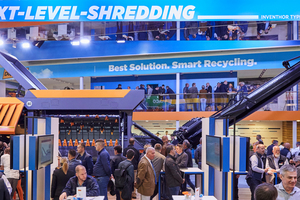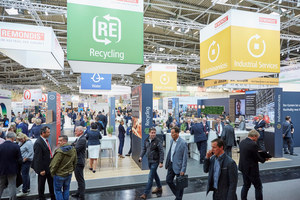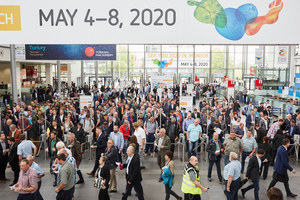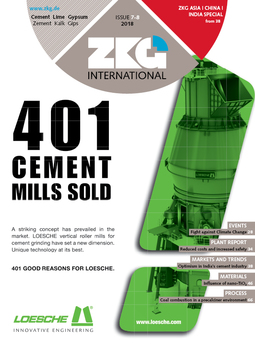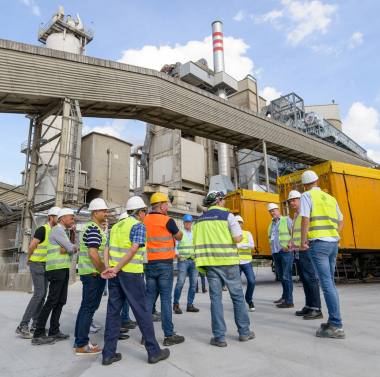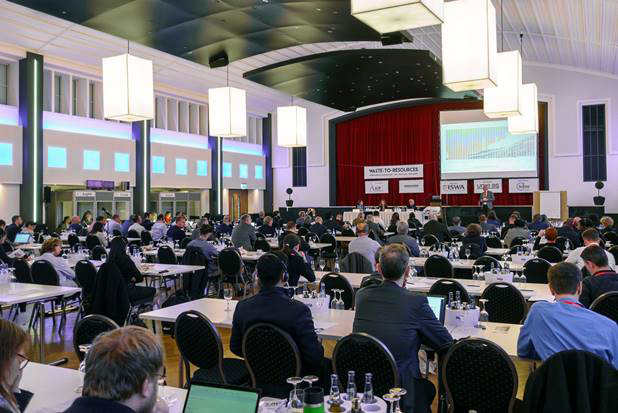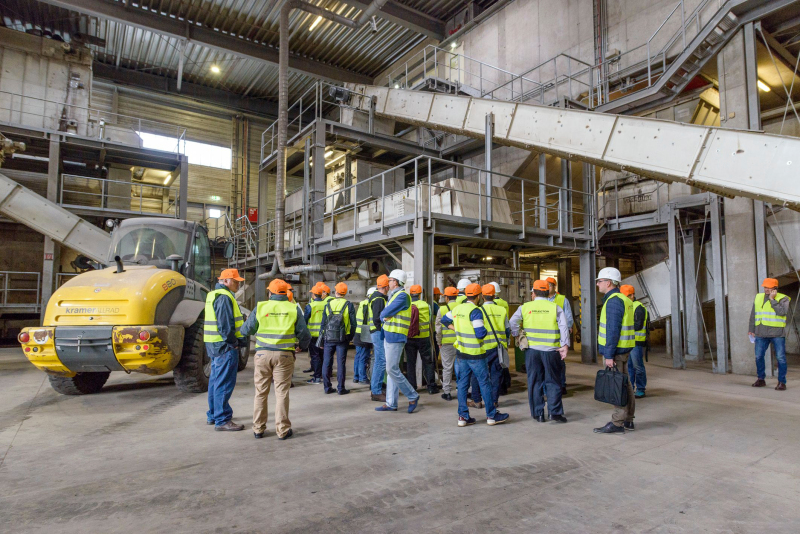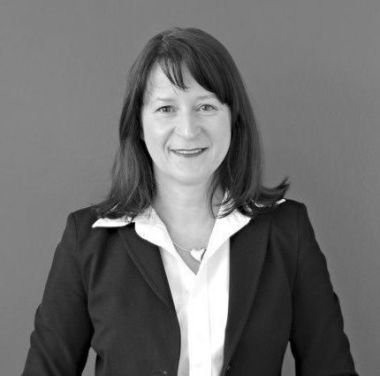Secondary resources at the IFAT 2018
More than 3305 exhibitors from 58 countries presented their state-of-the-art technologies and modern solutions for water treatment and waste valorization at the 2018 edition of the World’s Leading Trade Fair for Water, Sewage, Waste and Raw Materials Management in Munich/Germany from 14.05.-18.05.2018. In order to improve the navigation for the approx. 142 000 visitors from 162 countries, the halls were reorganized by themes and the topic “Energy Generation from Waste and Recovery of Secondary Raw Materials” was included.
Specialized presentations
Can we produce high-quality fuels from our steadily increasing amount of municipal solid waste? What are the cost-efficient and sustainable options for the use of recycling rejects? These and more questions were answered in presentations from various experts in alternative fuels (AF).
Dirk Lechtenberg, Managing Director at MVW Lechtenberg & Partner, presented the latest data on the use of AF from refuse material and biomass in the worldwide cement industry. In 2014, global cement production reached 4.3 billion t, of which 56.5 % was produced in China and 5.7 % in Europe. Based on this statistical data, in combination with the specific heat consumption of 850 kcal/kg clinker for the kiln, a net calorific value of 4500 kcal/kg and average costs of $/t 25.00 for refuse derived fuels (RDF), he created two scenarios for the quantification of the worldwide potential cost savings. The results show that an amount of at least 290 up to US$ 870 million per year could be saved by introducing a thermal substitution rate of 20 % to 60 % in the cement industry. Due to higher energy prices and the lack of selective collections as well as the high numbers of waste dumpsites, open burnings and landfills in emerging and developing country, the cost saving could even be significantly higher in other regions.
Century of secondary fuels
Furthermore, Dirk Lechtenberg emphasized that co-processing is already considered a recycling process due to the incorporation of the ashes into the complex matrix of the clinker, including the fixation of most present heavy metals. Also, the average energy efficiency of 70 % is significantly higher than in traditional Waste-to-Energy Plants (< 50 %). Hence, the use of AF in cement plants results in an efficient and sustainable material and energetic recovery of municipal solid waste (MSW). Regarding the preparation of RDF material, he mentioned that modern drying technologies could reach a yield of approximately 35-40 % RDF of typical MSW.
In 2016, a substitution rate of approximately 30 % was achieved in Europe, almost 65 % in Germany, but only an average of 3 % worldwide. On the one hand, these numbers could be justified with the lack of expertise and knowledge, and on the other hand due to the faulty or non-existing legislations and regulations in many countries.
Furthermore, he stressed that co-processing represents a great potential for direct and indirect CO2 mitigation by means of coal reduction for heat generation and a significant emission reduction from landfilled or burnt material. All in all, a new century of substitution of raw materials by secondary raw materials from solid and liquid waste has taken over the need for fossil fuels. He finalized his speech with the fact that AF will become a regular fuel in the near future and that this method represents an improvement of climate and environmental protection and also provides a sustainable solution for waste management, not only in Europe but in particular in emerging and developing countries.
IFAT discussions
A focal point and interesting discussion at the IFAT 2018 was Chinas Importation Ban on European plastics, what resulted in new challenges for the European waste management and recycling industries. Considering a lack of recycling options for several materials in Europe, the possibility of RDF production from MSW is currently gaining more attention. The existing RDF producers in the Munich region, for example, are already installing new sorting lines. In addition, a separate collection of 2D plastics is being discussed in order to improve the quality of RDF from MSW in Germany. Altogether, this development could strongly support the improvement of RDF technologies and generate more interest as well as acceptance from the population and other important players in the waste sector.
The use of AF has become a worldwide discussion, representing an important topic not only in huge markets such as China, India, Mexico and Brazil, but also in countries with lower GDP. Although the substitution of fossil fuels, i.e. natural gas, oil, and coal, in cement plants has great global potentials, the industries are facing a great challenge to combine recycling procedures with energetic recuperation. This is particularly true in emerging and developing countries, where dominant recycling sectors and in particular social aspects play an important role. A balance between these sectors could be achieved through an assurance of high scale procedures which combine economic and social criteria through a multidisciplinary approach. This could be one way to gain more acceptance for the use of MSW as an alternative energy source in the long-term.
The next issue of IFAT will take place in Munich from 04.05.-08.05.2020.

